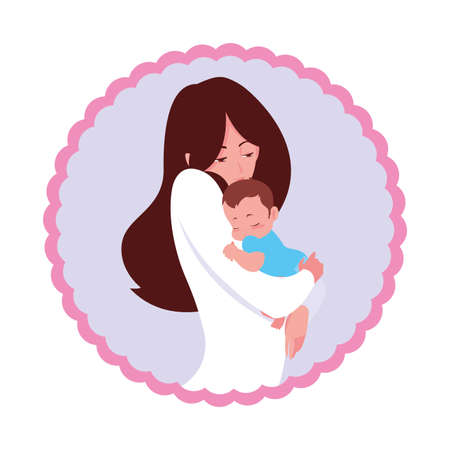1. Introduction to Common Allergies in Babies
As a parent, keeping your baby safe and healthy is always a top priority. One important aspect of infant health is understanding common allergies that can affect babies. Recognizing allergies early can help prevent discomfort and potential health risks. In this section, we’ll explore the most common allergies in infants and why early detection is essential.
What Are Common Allergies in Babies?
Allergies occur when a baby’s immune system reacts to substances that are usually harmless. These allergens can come from food, environmental factors, or even everyday products used on their skin. Here are some of the most common allergens that affect infants:
| Type of Allergy | Common Triggers |
|---|---|
| Food Allergies | Dairy, eggs, peanuts, tree nuts, soy, wheat, fish, shellfish |
| Environmental Allergies | Pollen, dust mites, pet dander, mold |
| Skin Allergies | Fragrances, soaps, detergents, certain fabrics |
| Insect Allergies | Bee stings, mosquito bites |
Why Early Recognition Matters
The sooner you recognize allergy symptoms in your baby, the quicker you can take action to manage them. Some allergic reactions can be mild, such as a rash or an upset stomach, while others can be severe and life-threatening. Identifying allergies early allows parents to work with pediatricians to create a plan for managing symptoms and avoiding triggers.
Signs to Watch For
Babies can’t communicate how they feel, so it’s important for parents to look out for signs of allergies. Common symptoms include:
- Skin Reactions: Rashes, eczema flare-ups, hives
- Tummy Troubles: Vomiting, diarrhea, excessive gas
- Respiratory Issues: Sneezing, coughing, wheezing
- Irritability: Excessive crying or fussiness without an obvious cause
The Role of Pediatricians in Diagnosis
If you suspect your baby has an allergy, consulting a pediatrician is the best step forward. They may recommend allergy testing or elimination diets to pinpoint triggers. Understanding your babys allergies early helps ensure they grow up happy and healthy.
2. Signs and Symptoms of Allergies in Babies
Allergies can show up in different ways, and recognizing the signs early can help you take action to keep your baby comfortable and safe. Common allergic reactions in babies often affect the skin, digestive system, and respiratory system. Below are some key symptoms to watch for.
Skin Reactions
Skin-related allergy symptoms are among the most common in babies. These reactions may appear shortly after exposure to allergens like food, pet dander, or certain fabrics.
| Skin Reaction | Description |
|---|---|
| Eczema | Dry, itchy, red patches on the skin that may become irritated or inflamed. |
| Hives | Raised, red welts on the skin that may be itchy and come and go quickly. |
| Swelling | Puffiness around the face, lips, or eyes, which can be a sign of an allergic reaction. |
Digestive Issues
If your baby has an allergy to certain foods or ingredients, they might experience digestive problems. These symptoms usually occur within minutes to hours after consuming the allergen.
| Digestive Symptom | Description |
|---|---|
| Nausea or Vomiting | Your baby may spit up more than usual or vomit after eating. |
| Diarrhea | Bowel movements may become loose, watery, or more frequent than normal. |
| Bloating or Gas | Your baby may seem uncomfortable with stomach pain or excessive gas. |
| Blood in Stool | A possible sign of a severe allergic reaction affecting the digestive tract. |
Respiratory Problems
An allergic reaction can also affect your babys breathing. This is especially concerning because severe respiratory symptoms can indicate a serious allergic response.
| Respiratory Symptom | Description |
|---|---|
| Coughing or Wheezing | A persistent cough or wheezing sound when breathing could indicate an allergy. |
| Nasal Congestion or Runny Nose | A stuffy nose or excessive mucus production without signs of illness. |
| Trouble Breathing | If your baby struggles to breathe, flares their nostrils while breathing, or appears to be gasping for air, seek medical attention immediately. |
| Anaphylaxis (Severe Reaction) | A rare but life-threatening reaction that includes difficulty breathing, swelling of the face and throat, and sudden drop in blood pressure. Call 911 if this occurs. |
When to See a Doctor?
If you notice any of these symptoms repeatedly after feeding your baby certain foods or exposing them to potential allergens like pets or dust, it’s important to talk to a pediatrician. Severe reactions like difficulty breathing or swelling require immediate medical attention.
Tracking Symptoms for Diagnosis
If you suspect allergies, keeping a symptom diary can be helpful. Note what your baby ate, where they were, and any new products used before symptoms appeared. This information can assist doctors in identifying triggers more accurately.
The Importance of Early Detection
The sooner allergies are identified, the easier it is to manage them and prevent discomfort for your little one. Understanding these signs will help you take proactive steps toward keeping your baby happy and healthy.

3. Common Allergens That Affect Infants
Babies can develop allergies to a variety of substances, and some allergens are more common than others. Understanding these allergens can help parents recognize symptoms early and take appropriate precautions. Below is a breakdown of the most frequent allergens that affect infants.
Dairy
Dairy allergies occur when a babys immune system reacts negatively to proteins found in cows milk. This is different from lactose intolerance, which involves difficulty digesting lactose rather than an immune response.
Common Symptoms:
- Skin rashes or eczema
- Vomiting or diarrhea
- Irritability or colic-like symptoms
- Respiratory issues such as wheezing
Eggs
Egg allergies are one of the most common food allergies in infants. The reaction is typically triggered by proteins found in egg whites or yolks.
Common Symptoms:
- Hives or skin irritation
- Nasal congestion or sneezing
- Nausea, vomiting, or diarrhea
- Anaphylaxis in severe cases
Soy
Soy is often found in baby formulas and processed foods. Some infants may develop an allergic reaction to soy proteins.
Common Symptoms:
- Tummy troubles such as gas and bloating
- Eczema or skin redness
- Irritability after feeding
- Difficulties with digestion
Pollen
Pollen allergies are less common in very young infants but can still occur, especially if there is a family history of seasonal allergies.
Common Symptoms:
- Sneezing and runny nose
- Coughing or wheezing
- Irritated eyes or watery discharge
- Mild skin reactions in some cases
Pet Dander
If you have pets at home, your baby may develop an allergy to pet dander—tiny flakes of skin shed by cats, dogs, and other animals.
Common Symptoms:
- Nasal congestion and sneezing
- Coughing or wheezing
- Eczema flare-ups or itchy skin
- Irritated eyes or redness
A Quick Overview of Common Allergens and Their Symptoms
| Allergen | Main Symptoms | Possible Sources |
|---|---|---|
| Dairy (Milk) | Eczema, vomiting, diarrhea, wheezing | Cow’s milk, cheese, yogurt, infant formula with dairy ingredients |
| Eggs | Nasal congestion, skin irritation, nausea, anaphylaxis (severe cases) | Baked goods, scrambled eggs, mayonnaise, some vaccines |
| Soy | Bloating, eczema, irritability after feeding, digestive problems | Soy-based formula, tofu, soy sauce, processed foods containing soy protein isolate |
| Pollen | Sneezing, runny nose, coughing, irritated eyes | Trees, grass, flowers during allergy season |
| Pet Dander | Nasal congestion, coughing, itchy skin, irritated eyes | Cats, dogs, rabbits, rodents |
If you suspect your baby has an allergy to any of these common allergens, consult a pediatrician for proper diagnosis and guidance on managing their symptoms.
4. How Allergies Are Diagnosed in Babies
Identifying allergies in babies can be challenging, but pediatricians use several methods to determine what might be triggering a reaction. The diagnostic process often includes elimination diets, skin tests, and blood tests. Understanding how these tests work can help parents navigate their babys allergy diagnosis with confidence.
Elimination Diets
Elimination diets are one of the first steps in diagnosing food allergies. If a baby is suspected to have a food allergy, the doctor may recommend removing specific foods from their diet (or the breastfeeding parents diet if the baby is nursing) for a set period. After some time, foods are reintroduced one at a time while monitoring for allergic reactions.
Skin Tests
Skin prick tests are commonly used to check for environmental and food allergies. A small amount of the suspected allergen is placed on the baby’s skin, usually on the forearm or back. The skin is then lightly pricked to allow the substance to enter just beneath the surface. If a red, raised bump appears, it indicates an allergic reaction.
Blood Tests
Blood tests measure the presence of allergen-specific antibodies called IgE. These tests can help determine whether a baby has an allergy and how severe it might be. Blood tests are often used when skin testing isn’t possible or when multiple allergies are suspected.
Comparison of Allergy Diagnostic Methods
| Test Type | How It Works | What It Detects | Pros | Cons |
|---|---|---|---|---|
| Elimination Diet | Removes and reintroduces foods to observe reactions | Food allergies | Non-invasive, helps identify trigger foods | Time-consuming, requires strict monitoring |
| Skin Prick Test | A small amount of allergen is placed on the skin and lightly pricked | Food and environmental allergies | Quick results, relatively painless | May not be accurate for very young infants, potential false positives |
| Blood Test (IgE Test) | Measures immune response to allergens in the blood | Food and environmental allergies | No skin irritation, good for multiple allergies | Takes longer for results, may not always indicate severity of reaction |
When to See a Pediatrician
If your baby experiences frequent rashes, digestive issues, wheezing, or other allergy symptoms, consult a pediatrician. Early diagnosis and management can prevent discomfort and complications while ensuring your baby stays happy and healthy.
5. What to Do If You Suspect an Allergy
If you think your baby may have an allergy, it’s important to take the right steps to identify the cause and ensure they receive proper care. Here’s what you can do:
Track Symptoms and Patterns
Start by keeping a detailed record of your babys symptoms. Note when they occur, what your baby ate or was exposed to before the reaction, and how long the symptoms last. This information will be helpful for your pediatrician.
Symptoms to Track
| Symptom | Description |
|---|---|
| Skin Reactions | Rashes, hives, or eczema flare-ups |
| Digestive Issues | Vomiting, diarrhea, constipation, or excessive gas |
| Respiratory Problems | Congestion, wheezing, or difficulty breathing |
| Irritability | Unusual fussiness or discomfort after eating certain foods |
Avoid Potential Triggers
If you suspect a specific food or environmental factor is causing the allergy, try eliminating it from your babys diet or surroundings. Common allergens include dairy, eggs, nuts, and pet dander.
Consult Your Pediatrician
Your doctor can help determine if your baby has an allergy and may recommend testing such as skin prick tests or blood tests. They can also guide you on introducing foods safely if food allergies are suspected.
Consider an Elimination Diet
If your baby is breastfed and experiencing allergic reactions, you may need to adjust your own diet. Removing common allergens like dairy or soy for a few weeks can help identify triggers.
Create an Action Plan
If an allergy is confirmed, work with your pediatrician to develop a plan for managing symptoms and avoiding allergens. In some cases, medications like antihistamines may be recommended.


